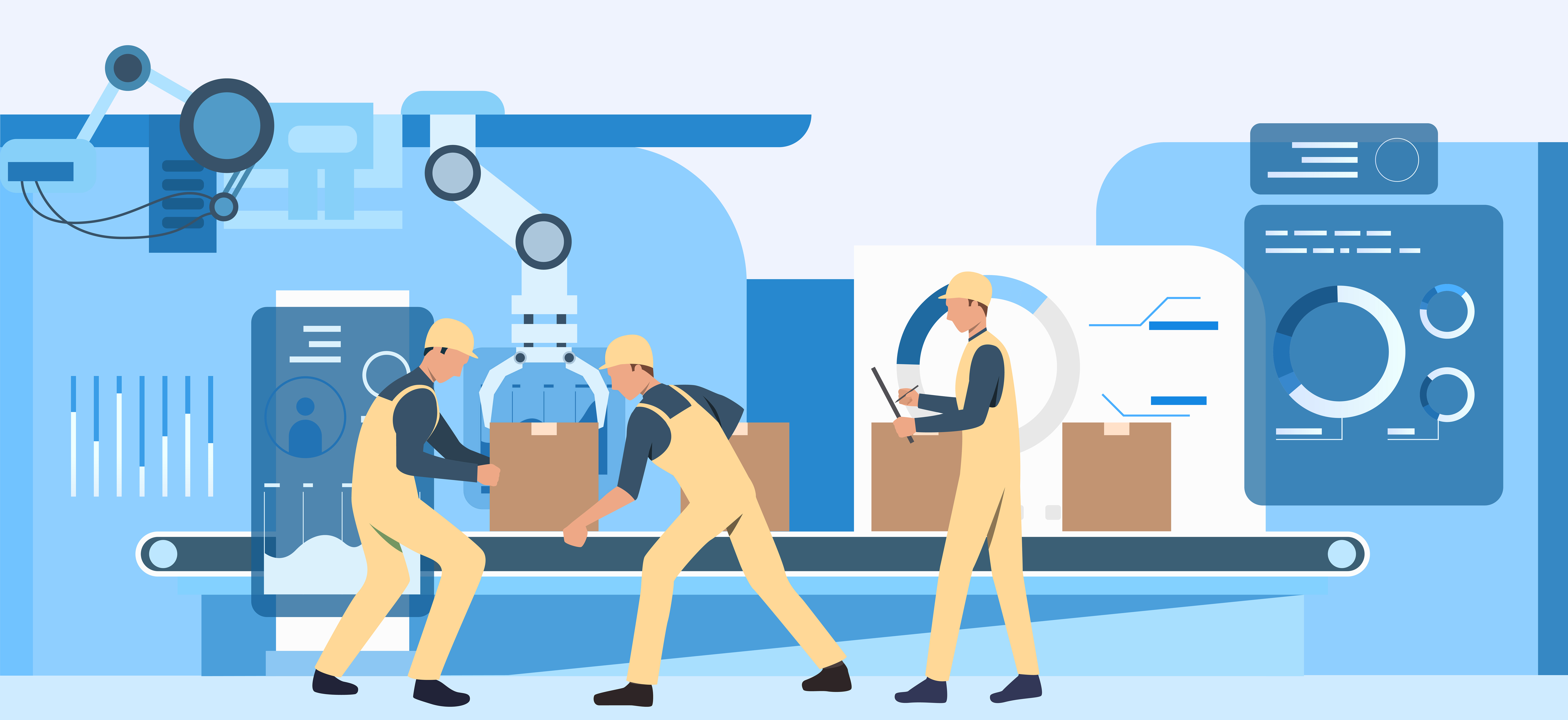Lean manufacturing is a systematic approach to minimizing waste without sacrificing productivity within a manufacturing system. Rooted in the Toyota Production System, lean manufacturing aims to enhance efficiency, reduce costs, and improve product quality by focusing on value-added processes and eliminating non-value-added activities.

Tools and Techniques
1. 5S Methodology
The 5s methodology focuses on workplace organization to enhance efficiency and safety.
- Sort (Seiri): Remove unnecessary items from the workspace to reduce clutter and improve focus.
- Set in Order (Seiton): Arrange remaining items logically for ease of access and use.
- Shine (Seiso): Regularly clean the workplace to maintain a pleasant and efficient environment.
- Standardize (Seiketsu): Establish standards to maintain order and cleanliness.
- Sustain (Shitsuke): Continuously practice and improve the 5S principles to ensure long-term benefits.
2. Kaizen (Continuous Improvement)
Kaizen emphasizes small, incremental changes that collectively lead to significant improvements.
- Employee Involvement: Encourage all employees to identify areas for improvement.
- Focus on Processes: Target specific processes for enhancement rather than overall outcomes.
3. Value Stream Mapping (VSM)
Value Stream Mapping(VSM) is a Value Stream Mapping(VSM) visual tool used to map out all the steps in a production process, highlighting waste and areas for improvement.
- Current State Mapping: Document the existing process flow to identify bottlenecks and inefficiencies.
- Future State Mapping: Develop an improved process flow that eliminates waste and enhances efficiency.
4. Just-in-Time (JIT) Production
JIT aims to align production schedules with customer demand to reduce inventory levels and improve cash flow.
- Pull System: Produce items only as needed, based on actual demand rather than forecasts.
- Reduced Lead Times: Streamline production processes to shorten the time between order and delivery.
5. Kanban
Kanban is a scheduling system that uses visual signals to manage workflow and inventory.
- Visual Management: Use cards or electronic signals to indicate when production should start or stop.
- Continuous Flow: Ensure a smooth flow of materials and products through the production process.
6. Total Productive Maintenance (TPM)
TPM focuses on maintaining and improving equipment to prevent breakdowns and ensure smooth operations.
- Preventive Maintenance: Schedule regular maintenance to keep equipment in optimal condition.
- Operator Involvement: Train operators to perform basic maintenance tasks and identify potential issues.
Challenges
1. Resistance to Change
Implementing lean manufacturing often requires a cultural shift, which can be met with resistance from employees and management.
- Cultural Shift: Change the mindset of employees and management to embrace lean principles.
- Training and Education: Provide comprehensive training to ensure everyone understands and can apply lean methodologies.
2. Sustaining Improvements
Maintaining the gains achieved through lean initiatives requires ongoing effort and commitment.
- Continuous Monitoring: Regularly review processes to ensure improvements are sustained.
- Leadership Commitment: Ensure ongoing support from leadership to reinforce the importance of lean initiatives.
3. Integration with Existing Systems
Integrating lean tools with existing enterprise resource planning (ERP) and production systems can be challenging.
- Compatibility Issues: Ensure lean tools align with current systems to avoid disruptions.
- Resource Allocation: Allocate sufficient resources to support the integration and implementation of lean tools.
4. Measuring Success
Defining and tracking relevant metrics is crucial to evaluate the impact of lean implementation.
- Defining Metrics: Establish clear metrics that align with lean objectives.
- Data Collection: Implement accurate and consistent data collection methods for analysis.
5. Balancing Lean with Other Priorities
Lean initiatives must be balanced with other business priorities, which can sometimes conflict.
- Conflicting Goals: Manage the tension between lean objectives and other business goals.
- Resource Constraints: Ensure adequate resources are available for lean initiatives without compromising other operations.
Conclusion
Implementing lean manufacturing requires a strategic approach that incorporates various tools and techniques designed to eliminate waste and enhance efficiency. While the benefits are significant, including improved productivity and product quality, the challenges such as resistance to change, sustaining improvements, and integrating with existing systems must be effectively managed. With committed leadership and a focus on continuous improvement, lean manufacturing can drive substantial positive changes in manufacturing operations.